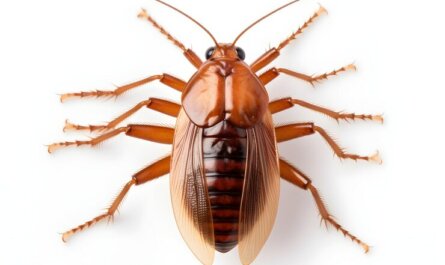Are you being pestered by intrusive bed bugs? These persistent pests are actually incredibly hard to kill and eliminate. In fact, they have genetic mutations that aid in their resilience against many extermination treatments.
Trying to get rid of bed bugs can quickly become a frustrating process with limited success – this blog offers specific strategies to fight bed bug infestations. Learn how you can take preventative measures, better identify the intruders, and discover powerful extermination solutions! So let’s dive into why bed bugs are so difficult eradicating once and for all!
What Makes Bed Bugs So Difficult to Eliminate
Their ability to rapidly reproduce,survive long periods without feeding and hide in tiny crevices make bed bugs exceptionally hard to eliminate.
Rapid reproduction
Bed bugs have an incredibly fast reproduction rate, allowing infestations to quickly get out of hand if not tackled promptly. Female bed bugs can lay up to 541 eggs in their lifetime, at a rate of 1-5 each day.
This rapid breeding cycle is one of the primary reasons why they are so difficult to eliminate and control–their huge population growth means that small errors in extermination efforts can lead to re-infestation.
Their high reproductive capacity makes it even more challenging for homeowners, property owners, and pest control professionals who are trying to rid any space from a bed bug infestation.
Ability to survive without feeding for long periods
Bed bugs can be among the most difficult and resilient pests to kill. One of their greatest advantages is their ability to endure extended periods of time without food, which allows them to survive even in the harshest conditions.
Adult bed bugs have been known to go without a meal for anywhere from 20 days up to 400 days, depending on temperature and humidity levels encountered along this period. Additionally, older stages of nymphs are able to starve far longer than younger ones due mainly hunger’s dependence on food temperatures; developments are drastically slowed down when cooled off during colder temperatures or lack feeding altogether- as such 100 day survival records have been observed based on these environmental factors.
By taking these measures they ensure that potential sensed threats are minimized in order for survival while waiting out until more favorable conditions present themselves once again – making them costly adversaries against elimination methods attempted by homeowners and professionals alike over shorter periods possible contamination routines require for prolonged infestations typical with highly urban areas in concentrated populations.
Hiding capabilities
Bed bugs are highly adept at sneaking into nooks and crannies to escape detection. This is due in part to their flat, oval-shaped bodies which allow them to squeeze into hard-to-reach spots like behind baseboards or inside electronics.
Some bed bugs also have a remarkable ability to camouflage themselves, making them almost undetectable even when inspections take place. To make matters worse, they are capable of surviving without feeding for months at a time; this means that an infestation can continue with no obvious signs of activity until the bed bugs come out searching for new food sources again.
It’s no surprise then that eliminating bed bug infestations is so tricky; if homeowners, renters and landlords don’t properly inspect every hiding spot (including those difficult-to-check areas such as loose wallpaper seams or electric sockets), any DIY measures taken are likely to fail and it can take professional exterminators multiple visits before they are able to effectively eradicate the problem from the home once and for all.
Common Challenges in Getting Rid of Bed Bugs
DIY methods often fail due to their ineffectiveness in treating bed bug infestations and the difficulty of identifying infected areas.
DIY methods often fail
When attempting to deal with a bed bug infestation on their own, the difficulty can quickly become overwhelming. DIY methods often fail due to common challenges associated with getting rid of the bugs.
Bed bugs reproduce rapidly and hide in small cracks and crevices making them hard to find and treat; even thorough cleaning may not be enough depending on the extent of an infestation.
Additionally, they are able to survive for long periods without feeding, meaning effective extermination might require multiple treatments or preventive measures such as applying insecticides (or other solutions) along baseboards or furniture legs.
Moreover, because identifying a bed bug infestation is tricky — bites versus fleas or mosquitoes can easily be confused — many individuals go years without realizing that their homes are filled with these resilient pests until a full-fledged infestation has taken over complete rooms further complicating things.
Identification and detection difficulties
Detecting and identifying bed bugs can be a major challenge, especially for the untrained eye. Bedbugs are incredibly small-typically ranging in length from 1 to 7 millimeters-making them difficult to spot even with magnifying glass.
Additionally, they tend to be brown or reddish in color which makes them blend easily into dark corners and crevices around the home. They like tight spaces such as behind loose wallpaper, along baseboards, and inside furniture cracks which further adds to their ability to remain undetected.
Even if you’re vigilant about inspecting your surroundings you may still miss out on spotting bedbugs due of their size and expertise in hiding. To make matters worse, physical symptoms such as skin irritation or bed bug bites may not always appear after initial contact since it varies from person to person – making identification even more difficult if one isn’t aware he/she has been exposed.
Effective Strategies for to Kill Bed Bugs
include utilizing professional extermination services, vacuuming and cleaning thoroughly, and using insecticides as appropriate.
Professional extermination services
Hiring a professional exterminator is often the most effective way to get rid of bed bugs. These professionals are highly trained in identifying and dealing with infestations, and have access to specialized tools, such as foggers and insecticides, that can be difficult for the average person to obtain.
What’s more, they use an integrated pest management approach combining non-chemical methods like heat treatments and chemical treatment options to eliminate nests and other potential hiding areas of bed bugs.
Professional exterminators also have experience in finding all possible places where eggs may be present including hampers or furniture that might otherwise be missed. For severe infestations, they provide chemical treatments or suggest fumigation which would not only help eradiate existing bed bugs, but prevent new ones from entering your home or office premises.
Vacuuming and cleaning
are two of the most effective techniques to get rid of bed bugs and their eggs. Vacuuming sucks up both adults and young pests, removing them from surfaces quickly. To ensure that vacuuming is effective against bed bugs, it is important to use a good quality vacuum cleaner with strong suction power to thoroughly remove all dirt, dust, hair, debris and any remaining pests in the affected area. Regular vacuuming also helps reduce numbers of insects by stopping them from reproducing at pace as they need blood for survival purposes.
Use of insecticides
Insecticides are a valuable tool in the efforts to eradicate bed bugs. Depending on their composition, insecticides can have different modes of action when killing bedbugs. For effective and long-lasting control select one or more insecticide formulations with varied modes of action — such as contact killers or vaporizers — which disrupts the bed bug’s life cycle at various levels.
Combining essential oils with pyrethroid insecticides also allows for enhanced kill rates due to the synergistic effects on adults. Oils like lemongrass oil and peppermint oil, for instance, increase deactivation rate of pyrethroid molecules leading to improved potency against insects.
Essential oils alone have been found successful at killing adult and nymph stages of bed bugs through direct contact exposure whilst not leaving an offensive odor in its wake. Therefore it is crucial to choose the right insecticide before beginning your treatment program if you intend to put a stop to your infestation problem without unnecessary hiccups along the way!
Prevention and Tips to Avoid Bed Bug Infestations
Taking preventive measures like regularly inspecting and cleaning your space is essential to guard against bed bug infestations. Read on for more tips about keeping bed bugs away!
Promptly address any signs of infestation
Early detection is key when it comes to bed bug infestations. It goes without saying that spotting and dealing with the problem sooner, rather than later, will go a long way in preventing an infestation from getting out of hand.
Homeowners, landlords, renters and other individuals should look for signs such as rusty or reddish stains on their mattresses, pinpoint dark spots which are actually bed bug excrement spots and fecal spots left behind by bed bugs.
Shed egg cases can also be found near cracks or crevices where they were laid – these appear as small clusters of dots usually ranging between 2mm to 5mm in size. If any of these signs are present then professional help should be sought immediately – prompt treatment reduces the risk of the infestation spreading further and becoming more serious over time,.
Regularly inspect and clean living spaces
to prevent and avoid bed bug infestations. Homeowners, renters, landlords, pest professionals, parents, travelers and other individuals living in urban areas must take proactive steps to inspect and regularly clean living spaces for any signs of bed bugs. This includes routinely clearing out the clutter in the home which can reduce hiding places for bed bugs. An integrated pest management (IPM) approach of non-chemical and pesticide methods can be used in order to control an infestation effectively. Additionally, inspecting and monitoring the situation is essential so one can determine its extent and location. Easy-to-monitor traps such as Climb-Up Interceptor® should also be utilized in this process. To make inspection easier and reduce potential hiding spots, it is recommended that clutter be kept to a minimum. Proper maintenance of living spaces will ensure individuals have a hygienic, bug free environment year round.
Utilize protective covers for mattresses and furniture
Protectorive covers, such as mattress encasements and furniture covers, are an effective tool for preventing and controlling bed bug infestations. By utilizing protective covers in various places such as homes, hotels ,and campsites – it is possible to create a physical barrier that can effectively prevent bed bugs from travelling or reproducing within those areas.
The impermeable barriers of the protective covers also block any existing adults or larvae from escaping while trapping them inside so they cannot feed on their host. This is especially helpful if there are more than one person living in the home or if travelers often switch off staying at these locations.
The use of protective covers has become increasingly popular particularly with people who are concerned with health and hygiene related issues due to bed bugs being known carriers of diseases.
Parents may want to use mattress encasements when traveling to ensure their children’s safetyOpting for protective coverings have been shown to be much safer and more long-term solution compared to using insecticides which could potentially further aggravate the problem instead of eliminating it in some cases.


